A metal piece of mass 160 g lies in equilibrium inside a glass of water as shown in figure. The piece touches the bottom of the glass at a small number of points. If the density of the metal is 8000kgm−3, find the normal fore exerted by the bottom of the glass on the metal piece.

The correct Answer is:A, D
given m=160g
=160×10−3kg
ρ=8000kgm3 From the diagram
→mg=U+R
[whereU=Upwardthrust]
→mg=mg−vρwg ltbr> [becaueU=vρwg]
=mg−mp×ρw×g
=160×10−3(10−103×108000)
160×10−3×10(1−18)
=1.4N
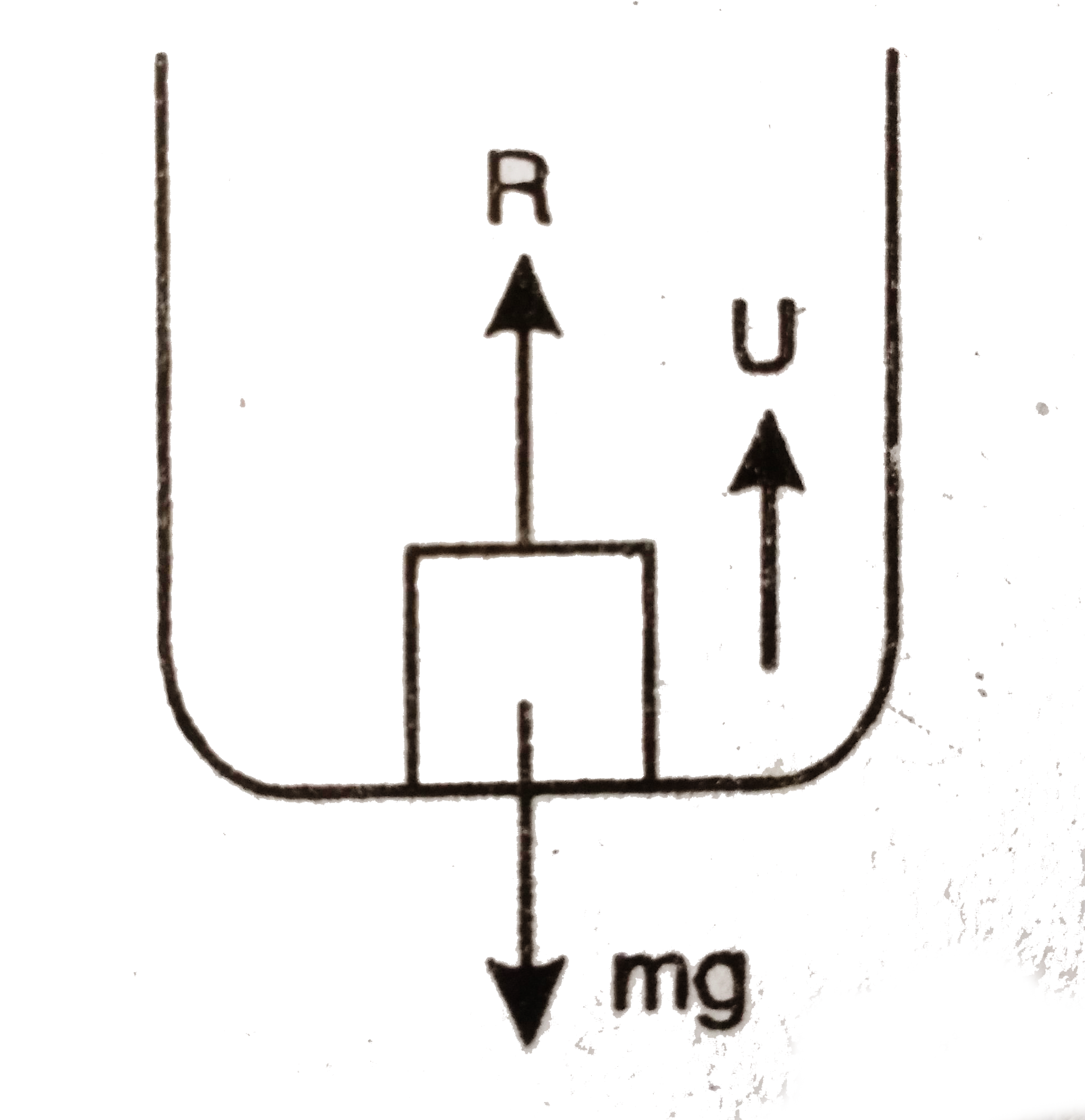
Topper's Solved these Questions
Similar Questions
A metal piece of mass 160 g lies iln equilibrium inside a glass of water figure. The ppece touches the bottom of the glass at a small number of points. If the density of the metl is 8000 kg m−3, find the normal fore exerted by the bottom of the glass on the metal piece.

View SolutionThe volume of a piece of metal is 50 cm3. If the density of metal is 2.5 g cm−3, find the mass of metal.
View Solution
Knowledge Check
An ice block having two similar metallic pieces is floating in water in a vessel as shown in figure. After sometimes the ice melts completely then
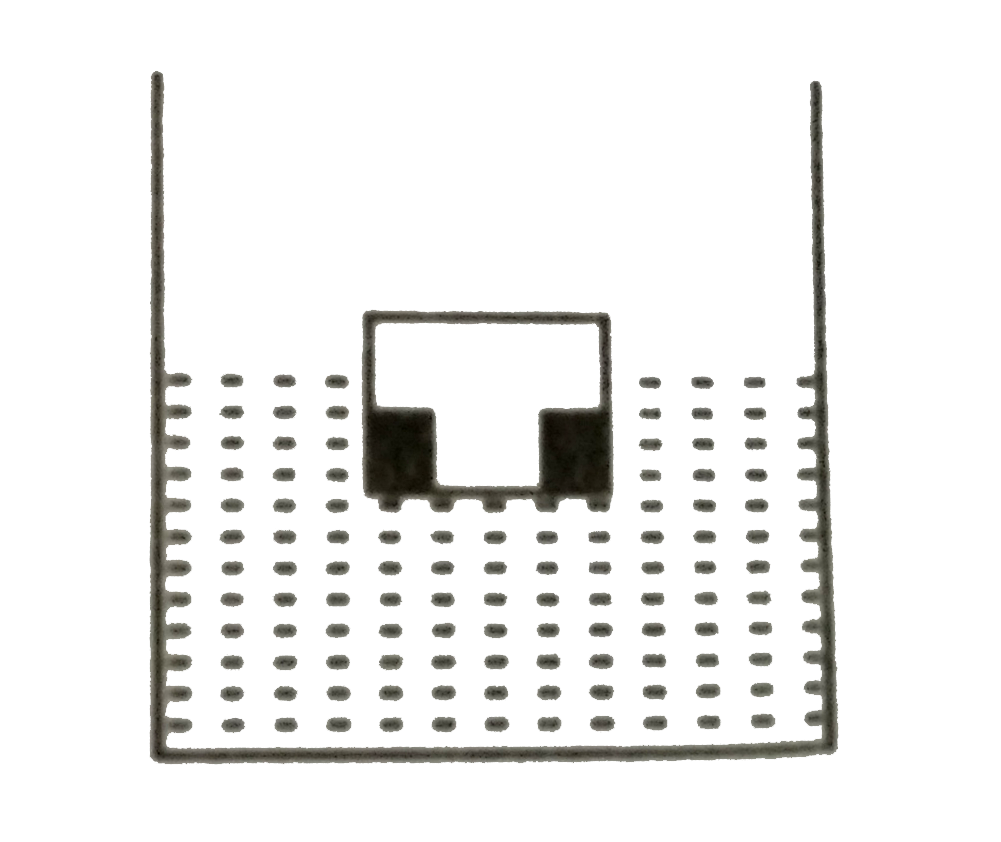 Athe water level rises in waterBthe water level falls in the vesselCthe water level does not change in vesselDthe water level may rise or fall depending upon the ratio of masses of ice and metallic pieces
Athe water level rises in waterBthe water level falls in the vesselCthe water level does not change in vesselDthe water level may rise or fall depending upon the ratio of masses of ice and metallic pieces
A piece of iron has a volume of 25cm3 and mass 195 g. Find the density of iron in kgm−3
View SolutionA glass full of water has a bottom of area 20cm2, top of area 20cm, height 20cm and volume half a litre.
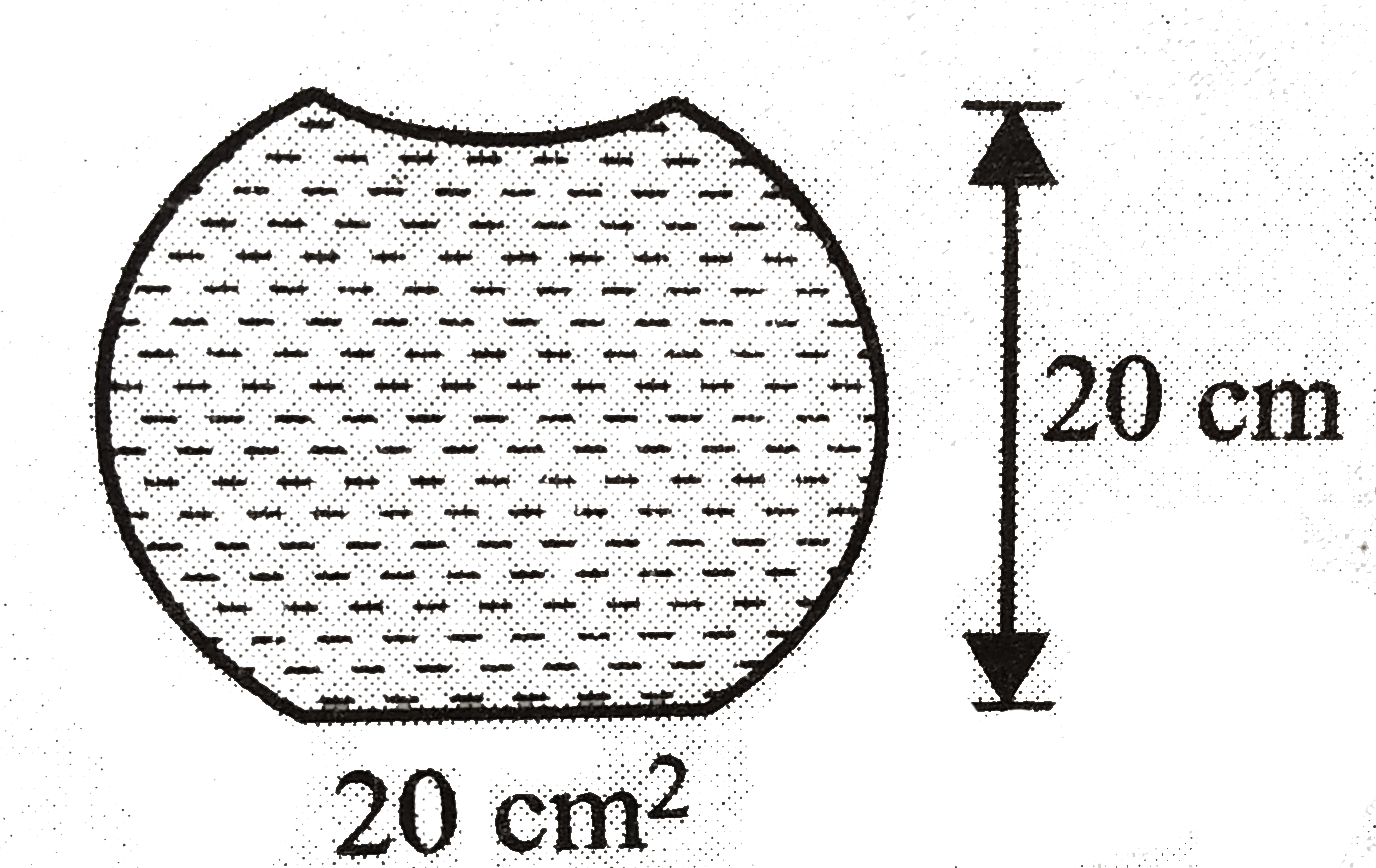
a. Find the force exerted by the water on the bottom.
b. Considering the equilibrium of the v, after. find the resultant force exerted by the side, of the glass on the water. Atmospheric pressure =1.0×105N/m2. Density of water =1000kg/m−3 and g=10m/s2
View SolutionA shallow glass dish is 4.00cm wide at the bottom as shown in figure. When an observer's eye is positioned as shown, the observer sees the edge of the bottom of the empty dish. When this dish is 4.00cm wide at the bottom as shown in figure. When an observer's eye is positioned as shown, the observer sees the edge of the empty dish. When this dish is filled with water, the observer sees the centre of the bottom of the dish. Find the height of dish μw=4/3.
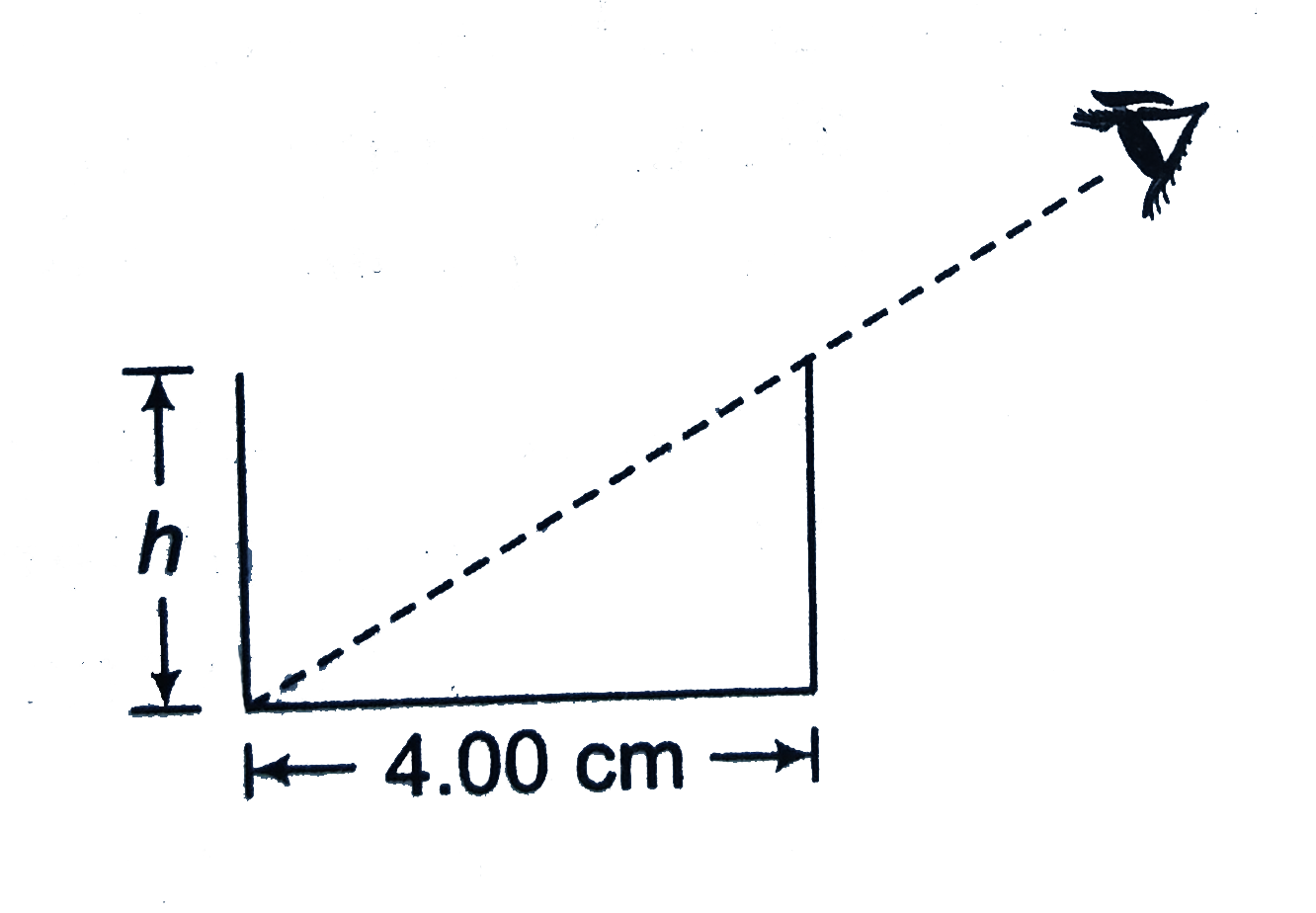
View SolutionAn object of mass m is submerged completely inside water filled in a container kept on a horizontal surface as shown. The object is tied to the bottom of the vessel by a massless, thin thread. In equilibrium, the tension in the thread is T. The relative density of the object is :
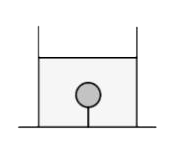
View SolutionA piece of brass of volume 30cm3 has a mass of 252 g. Find the density of brass in kgm−3
View SolutionA glass full of water upto a height of 10 cm has a bottom of are 10cm2, top of area 30cm2 and volume 1 litre.
(a) Find the force exerted by the water on the bottom.
(b) Find the resultant force exerted by the sides of the glass on the water.
(c ) If the glass is convered by a jar and the air inside the jar is completely pumped out, what will be the answer to parts (a) and (b).
(d) If a glass of different shape is used, provided the height, the bottom area, the top area and the volume are unchanged, will the answer to parts (a) and (b) change.
Take g=10m/s3, density of water=103kg/m3 and atmospheric pressure =1.01×105N/m2.
View SolutionA curved glass vessel full of water upto a height of 10 cm has a bottom of area 10cm2, top of area 30cm2 and volume 1 L.
(i) Find the force exerted by the water on the bottom.
(ii) Find the resultant force exerted by the sides of the glass on the water.
(iii) If the glass vessel is covered by a jar and the air inside the jar is completely pumped out, what will be the answers to parts (a) and (b)
(iv) If a glass vessel of different shape is used provided the height, the bottom area and the volume are unchanged, will the answers to parts (a) and (b) change.
(Take, g=10ms−2 , density of water =103kgm−2 and atmospheric pressure =1.01×105Nm−2)
View Solution
